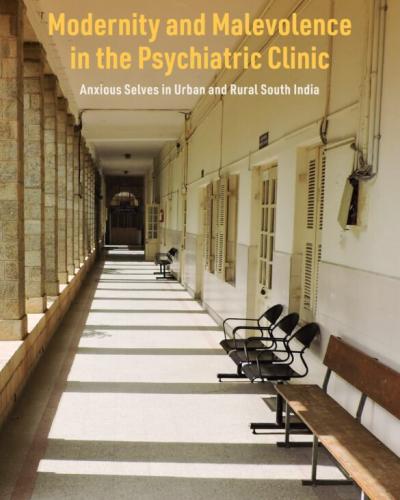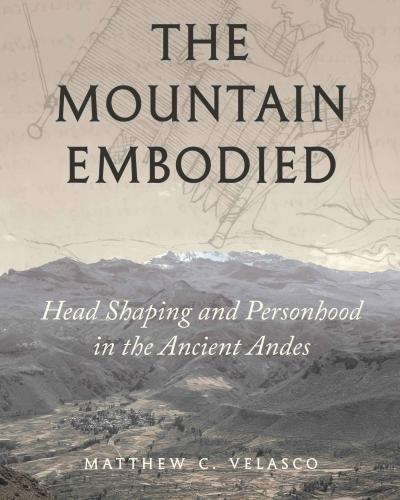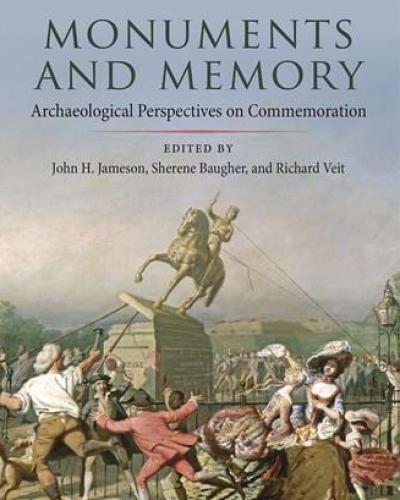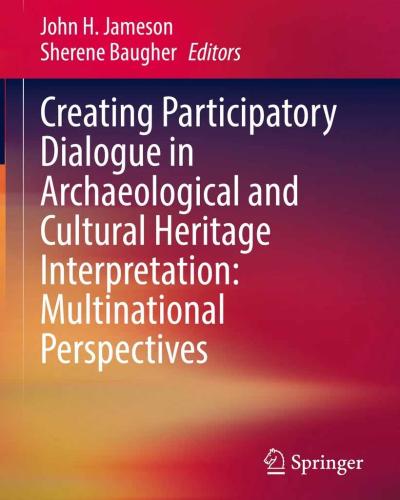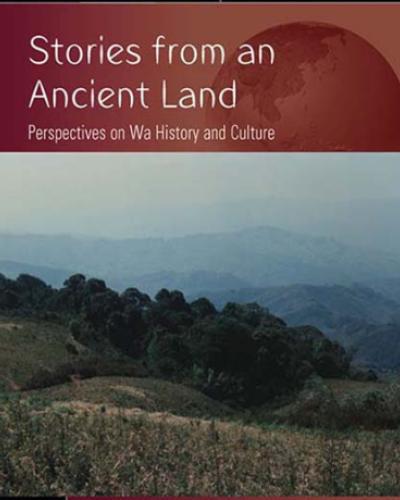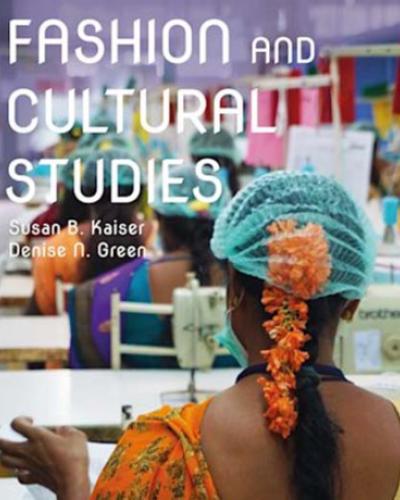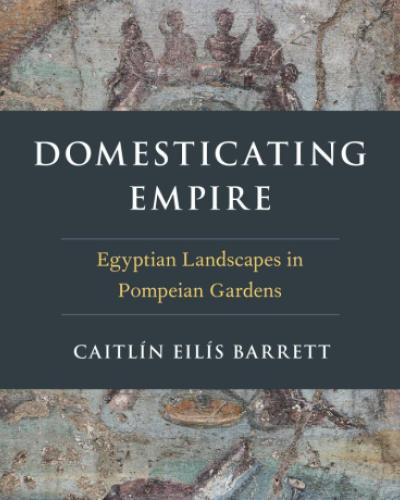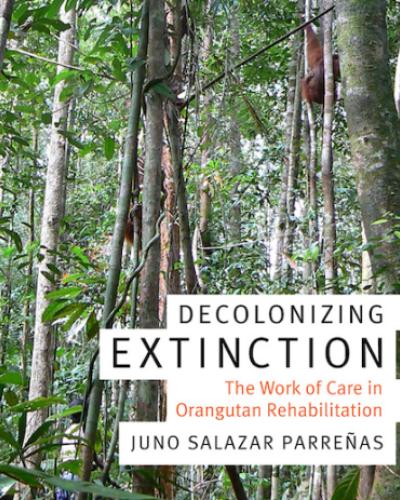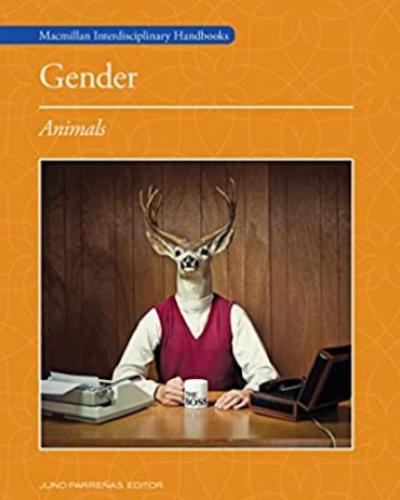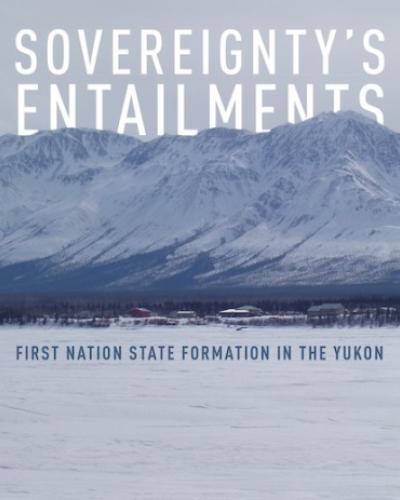Modernity and Malevolence in the Psychiatric Clinic: Anxious Selves in Urban and Rural South India
Modernity and Malevolence in the Psychiatric Clinic is a richly detailed ethnographic study of clinical care at NIMHANS, India’s leading mental health institution, offering rich observations of patient-physician interactions alongside interviews with psychiatrists and neurologists. It explores how patterns of psychosocial causation, shaped by modernity’s pressures, frame key questions in psychiatric practice.
With hundreds of patients visiting NIMHANS’ outpatient department daily, time constraints affect both doctors and patients. The stigma surrounding mental illness leads families to seek quick pharmaceutical solutions, avoiding psychotherapy for fear of exposing their condition to wider social circles—an issue that limits treatment options.
Urban modernity has introduced new sociocultural changes, creating tensions that shape vulnerable identities. Evolving religious disciplines have hardened social boundaries, frustrating aspirations and manifesting as somatic illness or spiritual affliction. This phenomenon drives the resurfaced diagnosis of “hysteria,” a term with both descriptive and analytical weight, in opposition to neuro-genetic determinism.
The book further explores the growing rigidity in thinking about good versus evil and self versus other. It argues that contemporary political and religious narratives sharpen social divisions, reinforcing rigid identity attachments and exacerbating clinical symptoms. Ultimately, it suggests that the “madness” observed in these cases stems from the impossible demands for singular, fixed identities in modern life, suppressing more fluid subjectivities and the histories that shape them.
University of Hawaii Press
The Kidney and the Cane: Planetary Health and Plantation Labor in Nicaragua
The recent unprecedented growth of Nicaragua’s sugarcane industry has brought promises of more jobs, better health care, and cleaner energy. But these promises have been overshadowed by an epidemic of chronic kidney disease of nontraditional causes (CKDnt). Unknown before the late 1990s, this disease has sickened and killed thousands of sugarcane plantation workers. Scientific studies link the disease to rises in mean average annual temperatures, chronic water scarcity, and the overuse of toxic agrochemicals. CKDnt is now understood as a consequence of global climate change. In The Kidney and the Cane, Alex M. Nading situates this epidemic within a deeper history of sugarcane plantation violence, arguing that CKDnt is not a result of climate change: it is climate change. Outlining a place-based approach to planetary health, Nading follows activists, scientists, and residents in the sugarcane zone wrestling with the consequences of plantation life. Along the way, he raises critical questions about the capacity of corporations and states to care for people and ecosystems; the ability of citizens and experts to regulate toxic substances; and the future of work on a warming planet.
Alex M. Nading is Associate Professor of Anthropology at Cornell University and author of Mosquito Trails: Ecology, Health, and the Politics of Entanglement.
Duke University Press
The Mountain Embodied: Head Shaping and Personhood in the Ancient Andes
A study of the ancient practice of Andean head shaping and its cultural connotations.
In the late sixteenth century, Spanish conquerors in Peru’s Colca Valley encountered the Collaguas and Cavanas, Indigenous people who undertook a striking form of body modification: Collaguas bound the heads of infants and children so that their skulls grew narrow and elongated, and Cavanas so that their skulls became wide and squat. Head shaping resulted in craniums that resembled two specific mountains associated with the groups. For Europeans, shaped skulls immediately and durably became a marker of territorialized ethnic difference.
The Mountain Embodied offers a more nuanced story. Having studied hundreds of samples of human remains, bioarchaeologist Matthew Velasco argues that reducing head shape to a mere ethnic marker is a colonial invention. Instead, the social significance of head shaping was protean and intersected with other structures of difference, such as gender, kinship, and status, influencing experience within the community. Head shaping, then, was one factor in the construction of a locally embedded kind of subjectivity. An outsider could deduce group identity from head shape, but for practitioners, head shaping reflected something else: nothing less than personhood itself.
Matthew C. Velasco is an assistant professor of anthropology and codirector of the Human and Animal Bone Laboratory at Cornell University.
University of Texas Press.
Sales Date: July 15, 2025
Monuments and Memory: Archaeological Perspectives on Commemoration
This volume examines many different public monuments to increase understanding of the cultural factors that have shaped their creation, maintenance, and—in some cases—removal. The role of monuments in communities and society continues to be an important and controversial topic, and the case studies in this volume contribute to this conversation by assessing the ways such markers can be empowering or marginalizing from a wide range of perspectives.
The monuments discussed here represent historical events from the Revolutionary War through the Korean War, including the “slave auction block” formerly located on the streets of Fredericksburg, Virginia; memorials to Confederate soldiers across the South and in northern POW cemeteries; and the Pullman National Monument in Chicago for workers who participated in the 1894 Pullman strike. This volume also highlights the dearth of statues memorializing the achievements of women and minorities, especially women of color, and contributors discuss whether recent movements advocating for more inclusive histories will lead to an increase in monuments honoring people whose narratives have been suppressed.
Looking at the powerful role of monuments in conveying the memory of history to future generations, the contributors to Monuments and Memory show why it is important to address the messages of these sites and ask whose histories they may be silencing. This book demonstrates how conversations surrounding preservation and interpretation of monuments encourage community involvement.
Futures after Progress: Hope and Doubt in Late Industrial Baltimore
A powerful ethnographic study of South Baltimore, a place haunted by toxic pasts in its pursuit of better futures.
Factory fires, chemical explosions, and aerial pollutants have inexorably shaped South Baltimore into one of the most polluted places in the country. In Futures after Progress, anthropologist Chloe Ahmann explores the rise and fall of industrial lifeways on this edge of the city and the uncertainties that linger in their wake. Writing from the community of Curtis Bay, where two hundred years of technocratic hubris have carried lethal costs, Ahmann also follows local efforts to realize a good future after industry and the rifts competing visions opened between neighbors.
Examining tensions between White and Black residents, environmental activists and industrial enthusiasts, local elders and younger generations, Ahmann shows how this community has become a battleground for competing political futures whose stakes reverberate beyond its six square miles in a present after progress has lost steam. And yet—as one young resident explains—“that’s not how the story ends.” Rigorous and moving, Futures after Progress probes the deep roots of our ecological predicament, offering insight into what lies ahead for a country beset by dreams deferred and a planet on the precipice of change.
Chloe Ahmann is assistant professor of anthropology at Cornell University. This is her first book.
https://press.uchicago.edu/ucp/books/book/chicago/F/bo215474590.html
Kretek Capitalism: Making, Marketing, and Consuming Clove Cigarettes in Indonesia
Indonesia is the world's second-largest cigarette market: two out of three men smoke, and clove-laced tobacco cigarettes called kretek make up 95 percent of the market. Each year, more than 250,000 Indonesians die of tobacco-related diseases. To account for the staggering success of this lethal industry, Kretek Capitalism examines how kretek manufacturers have adopted global tobacco technologies and enlisted Indonesians to labor on their behalf in fields and factories, at retail outlets and social gatherings, and online. The book charts how Sampoerna, a Philip Morris subsidiary, uses contracts, competitions, and gender, age, and class hierarchies to extract labor from workers, influencers, artists, students, retailers, and consumers. Critically engaging nationalist claims about the commodity's cultural heritage and the jobs it supports, Marina Welker shows how global capitalism has transformed both kretek and the labor required to make and promote it.
Marina Welker is Associate Professor of Anthropology at Cornell University and author of Enacting the Corporation: An American Mining Firm in Post-Authoritarian Indonesia.
A free ebook version of this title is available through Luminos, University of California Press's Open Access publishing program. Visit www.luminosoa.org to learn more.
Creating Participatory Dialogue in Archaeological and Cultural Heritage Interpretation: Multinational Perspectives
This volume examines evolving trends and transnational perspectives on public interpretation of archaeological and cultural heritage, as well as levels of communication, from local to regional, national and international. It is presented in the context of the evolution of cultural heritage studies from the 20th century “expert approach” to the 21st century “people-centered approach,” with public participation and community involvement at all phases of the decision-making process. Our premise is not just about bringing in community members to be partners in decision making processes; some projects are being initiated by the community--not the heritage experts. In some instances, community members are central in initiating and bringing about change rather than the archaeologists or heritage specialists. In several cases in the book, descendants take the lead in changing heritage narratives.
The book addresses several central questions: Do these actions represent new emphases, or more fundamental pedagogical shifts, in interpretation? Are they resulting in more effective interpretation in facilitating emotional and intellectual connections and meanings for audiences? Are they revealing silenced histories? Can they contribute to, or help mediate, dialogues among a diversity of cultures? Can they be shared experiences as examples of good practice at national and international levels? What are the interpretation and presentation challenges for the future?
Cultural heritage, as an expression of a diversity of cultures, can be an important mediator between pasts and futures. In the past, people in power from the dominant ethnic, racial, socio-economic, gender, and religious groups determined the heritage message. Minorities were often silenced; their participation in the building and growth of a city, county, or nation’s history was overlooked. New philosophical/methodological trends in public interpretation are reshaping the messages delivered at archaeological/cultural heritage sites worldwide. The role of the experts, as well as the participatory engagement of audiences and stakeholders are being redefined and reassessed. This book explores these processes, their results and effects on the future.
The Gayogo̱hó꞉nǫɁ People in the Cayuga Lake Region
Professor Kurt Jordan's history of the Gayogo̱hó꞉nǫɁ brings forward a part of the history of the Cayuga Lake region that had been formerly romanticized or forgotten altogether. It begins at the end of the last ice age 13,000 years ago, and traces the Gayogo̱hó꞉nǫɁ people up to the reoccupation of their traditional territory in 2003, and through current events through 2021. Jordan’s short (80-page) book is constructed as a Western-style history that relies mainly on the written record, archaeological evidence, and some community-based oral histories that Gayogo̱hó꞉nǫɁ people shared with him. Readers will think differently about ancient history, recent events, and the landscape of the region after reading this book.
Kurt Jordan is Associate Professor of Anthropology and American Indian and Indigenous Studies at Cornell University. He currently directs Cornell's American Indian and Indigenous Studies Program (AIISP). Jordan has studied the archaeology and history of Indigenous peoples in the Finger Lakes region in conjunction with members of the Hodinǫ̱hsǫ́:nih Nations since 1999.
Stories from an Ancient Land
The Wa people have a rich civilization of their own, and a deep history in the mountains of Southeast Asia. Their mythology suggests their land is the first place inhabited by humans, which they care for on behalf of the world. This book introduces aspects of Wa culture, including their approach to the world’s troubles and the lessons others might learn from it. It also presents a new interpretation of Wa headhunting, questioning explanations that see it as a primitive custom, and instead placing it within the fraught history of the last few centuries. (Berghahn Books, 2021)
Fashion and Cultural Studies
Co-authored by Denise Green and Susan B. Kaiser.
Bridging theory and practice, this accessible text considers fashion from both cultural studies and fashion studies perspectives, and addresses the growing interaction between the two fields.
Kaiser and Green use a wide range of cross-cultural case studies to explore how race, ethnicity, class, gender and other identities intersect and are produced through embodied fashion. Drawing on intersectionality in feminist theory and cultural studies, Fashion and Cultural Studies is essential reading for students and scholars.
This revised edition includes updated case studies and two new chapters. The first new chapter explores religion, spirituality, and faith in relation to style, fashion, and dress. The second offers a critique of “beauty” and considers dressed embodiment inclusive of diverse sizes, shapes and dis/abilities. Throughout the text, Kaiser and Green use a range of examples to interrogate the complex entanglements of production, regulation, distribution, consumption, and subject formation within and through fashion. (Bloomsbury, 2021)
Denise N. Green is an Associate Professor at Cornell University where she also directs the Cornell Fashion + Textile Collection. She is on the editorial boards of the Clothing and Textiles Research Journal, Fashion Studies, Critical Studies in Fashion & Beauty, and was the Vice President of Publications for the Costume Society of America, 2017–2021.
Susan B. Kaiser is Professor of Textiles and Clothing, and Gender, Sexuality and Women's Studies, and is a member of the Cultural Studies Graduate Groups at the University of California, Davis. She is the author of The Social Psychology of Clothing: Symbolic Appearances in Context (2nd edition).
Domesticating Empire: Egyptian Landscapes in Pompeian Gardens
This book is the first contextually oriented monograph on Egyptian imagery from Roman households. The author uses case studies from Flavian Pompeii to investigate the close association between representations of Egypt and a particular type of Roman household space: domestic gardens. Through paintings and mosaics depicting the Nile, canals that turned the garden itself into a model “Nile,” and statuary depicting Egyptian gods, animals, and individuals, many gardens in Pompeii confronted ancient visitors with images of (a Roman vision of) Egypt. Simultaneously far away and familiar, these imagined landscapes transformed domestic space into a microcosm of empire. In contrast to older interpretations that connect Roman “Aegyptiaca” to the worship of Egyptian gods or the problematic concept of “Egyptomania,” a contextual analysis of these garden assemblages suggests new possibilities for meaning. In Pompeian houses, Egyptian and Egyptian-looking objects and images interacted with their settings to construct complex entanglements of “foreign” and “familiar,” “self” and “other.” Representations of Egyptian landscapes in domestic gardens enabled individuals to present themselves as cosmopolitan, sophisticated citizens of empire. Yet at the same time, household material culture also exerted an agency of its own: domesticizing, familiarizing, and “Romanizing” once-foreign images and objects. That which was once alien and potentially dangerous was now part of the domus itself, increasingly incorporated into cultural constructions of what it meant to be “Roman.” Through participatory multimedia assemblages evoking landscapes both local and international, the houses examined in this book made the breadth of empire compatible with the familiarity of home. (Oxford University Press, 2019)
Through Japanese Eyes: Thirty Years of Studying Aging in America
In Through Japanese Eyes, based on her thirty-year research at a senior center in upstate New York, anthropologist Yohko Tsuji describes old age in America from a cross-cultural perspective. Comparing aging in America and in her native Japan, she discovers that notable differences in the panhuman experience of aging are rooted in cultural differences between these two countries, and that Americans have strongly negative attitudes toward aging because it represents the antithesis of cherished American values, especially independence. Tsuji reveals that American culture, despite its seeming lack of guidance for those aging, plays a pivotal role in elders’ lives, simultaneously assisting and constraining them. Furthermore, the author’s lengthy period of research illustrates major changes in her interlocutors’ lives, incorporating their declines and death, and significant shifts in the culture of aging in American society as Tsuji herself gets to know American culture and grows into senescence herself.
Through Japanese Eyes offers an ethnography of aging in America from a cross-cultural perspective based on a lengthy period of research. It illustrates how older Americans cope with the gap between the ideal (e.g., independence) and the real (e.g., needing assistance) of growing older, and the changes the author observed over thirty years of research. (Rutgers University Press, 2020)
Tasting Qualities The Past and Future of Tea
What is the role of quality in contemporary capitalism? How is a product as ordinary as a bag of tea judged for its quality? In her innovative study, Sarah Besky addresses these questions by going inside an Indian auction house where experts taste and appraise mass-market black tea, one of the world’s most recognized commodities. Pairing rich historical data with ethnographic research among agronomists, professional tea tasters and traders, and tea plantation workers, Besky shows how the meaning of quality has been subjected to nearly constant experimentation and debate throughout the history of the tea industry. Working across fields of political economy, science and technology studies, and sensory ethnography, Tasting Qualities argues for an approach to quality that sees it not as a final destination for economic, imperial, or post-imperial projects but as an opening for those projects. (University of California Press, 2020)
Yeshiva Days
New York City’s Lower East Side has witnessed a severe decline in its Jewish population in recent decades, yet every morning in the big room of the city’s oldest yeshiva, students still gather to study the Talmud beneath the great arched windows facing out onto East Broadway. Yeshiva Days is Jonathan Boyarin’s uniquely personal account of the year he spent as both student and observer at Mesivtha Tifereth Jerusalem, and a poignant chronicle of a side of Jewish life that outsiders rarely see.
Boyarin explores the yeshiva’s relationship with the neighborhood, the city, and Jewish and American culture more broadly, and brings vividly to life its routines, rituals, and rhythms. He describes the compelling and often colorful personalities he encounters each day, and introduces readers to the Rosh Yeshiva, or Rebbi, the moral and intellectual head of the yeshiva. Boyarin reflects on the tantalizing meanings of “study for its own sake” in the intellectually vibrant world of traditional rabbinic learning, and records his fellow students’ responses to his negotiation of the daily complexities of yeshiva life while he also conducts anthropological fieldwork.
A richly mature work by a writer of uncommon insight, wit, and honesty, Yeshiva Days is the story of a place on the Lower East Side with its own distinctive heritage and character, a meditation on the enduring power of Jewish tradition and learning, and a record of a different way of engaging with time and otherness.
Genetic Afterlives
In 1997, M. E. R. Mathivha, an elder of the black Jewish Lemba people of South Africa, announced to the Lemba Cultural Association that a recent DNA study substantiated their ancestral connections to Jews. Lemba people subsequently leveraged their genetic test results to seek recognition from the post-apartheid government as indigenous Africans with rights to traditional leadership and land, retheorizing genetic ancestry in the process. In Genetic Afterlives, Noah Tamarkin illustrates how Lemba people give their own meanings to the results of DNA tests and employ them to manage competing claims of Jewish ethnic and religious identity, African indigeneity, and South African citizenship. Tamarkin turns away from genetics researchers' results that defined a single story of Lemba peoples' “true” origins and toward Lemba understandings of their own genealogy as multivalent. Guided by Lemba people’s negotiations of their belonging as diasporic Jews, South African citizens, and indigenous Africans, Tamarkin considers new ways to think about belonging that can acknowledge the importance of historical and sacred ties to land without valorizing autochthony, borders, or other technologies of exclusion. (Duke University Press, 2020)
Decolonizing Extinction: The Work of Care in Orangutan Rehabilitation
In Decolonizing Extinction Juno Salazar Parreñas ethnographically traces the ways in which colonialism, decolonization, and indigeneity shape relations that form more-than-human worlds at orangutan rehabilitation centers on Borneo. Parreñas tells the interweaving stories of wildlife workers and the centers' endangered animals while demonstrating the inseparability of risk and futurity from orangutan care. Drawing on anthropology, primatology, Southeast Asian history, gender studies, queer theory, and science and technology studies, Parreñas suggests that examining workers’ care for these semi-wild apes can serve as a basis for cultivating mutual but unequal vulnerability in an era of annihilation. Only by considering rehabilitation from perspectives thus far ignored, Parreñas contends, could conservation biology turn away from ultimately violent investments in population growth and embrace a feminist sense of welfare, even if it means experiencing loss and pain. (Duke University Press, 2018)
The Future of Bangalore's Cosmopolitan Pasts
Bangalore is often heralded as India’s future—a city where global technologies converge with multinational capital to produce a cosmopolitan workforce and vibrant economic growth. In this narrative the city’s main challenge revolves around its success: whether its physical infrastructure can support its burgeoning population. Most observers assume that Bangalore’s emergence as a “global city” represents its more complete integration into the world economy and, by extension, a more inclusive and cosmopolitan outlook among its growing middle class.
Andrew C. Willford sheds light on a growing paradox: even as Bangalore has come to signify “progress” and economic possibility both within India and to the outside world, movements to make the city more monocultural and monolinguistic have gained prominence. Bangalore is the capital of the state of Karnataka, its borders linguistically redrawn by the postcolonial Indian state in 1956. In the decades that followed, organizations and leaders emerged to promote linguistic nationalism aimed at protecting the fragile unity of Kannadiga culture and literature against the twin threats of globalization and internal migration. Ironically, they support parochial cultural policies that impose a cultural and linguistic unity upon an area that historically stood at the crossroads of empires, trade routes, language practices, devotional literatures, and pilgrimage routes. Willford’s analysis, which focuses on the minority experience of Bangalore’s sizeable Tamil-speaking community, shows how the same forces of globalization that create growth and prosperity also foster uncertainty and tension around religion and language that completely contradict the region’s long history of cosmopolitanism.
Exploring this paradox in Bangalore’s entangled and complex linguistic and cultural pasts serves as a useful case study for understanding the forces behind cultural and ethnic revivalism in the contemporary postcolonial world. Buttressed by field research conducted over a twenty-two-year period (1992–2015), Willford shows how the past is a living resource for the negotiation of identity in the present. Against the gloom of increasingly communal conflicts, he finds that Bangalore still retains a fabric of civility against the modern markings of cultural difference. (University of Hawaii Press, 2018)
Wild Chimpanzees
As our closest primate relatives, chimpanzees offer tantalizing clues about the behavior of early human ancestors. This book provides a rich and detailed portrait of chimpanzee social life in the wild, synthesizing hundreds of thousands of hours of research at seven long-term field sites. Why are the social lives of males and females so different? Why do groups of males sometimes seek out and kill neighboring individuals? Do chimpanzees cooperate when they hunt monkeys? Is their vocal behaviour like human speech? Are there different chimpanzee 'cultures'? Addressing these questions and more, Adam Arcadi presents a fascinating introduction to the chimpanzee social universe and the challenges we face in trying to save this species from extinction. With extensive notes organized by field site and an appendix describing field methods, this book is indispensable for students, researchers, and anyone else interested in the remarkable and complex world of these intelligent apes.
- Synthesizes research from all the long-term chimpanzee field projects, offering a unique species-wide and site-wide perspective
- The concise and readable text ensures the book is accessible, while citations and extensive endnotes are useful for those who want to look deeper into the literature
- Emphasizes the conservation plight of chimpanzees and the importance of long-term scientific research projects for conservation
Gender: Animals
This volume of the Macmillan Interdisciplinary Handbooks series on gender studies engages feminist, queer, and transgender perspectives on animals. Gender: Animals traces how non-human and human animals are crucial subjects in gender studies, especially when it comes to understanding matters of life and death, difference and diversity, carnality, and representation. Its 21 chapters examine such topics as feminist food politics, veterinary care, zoos, microbes, breeding, chattel slavery, industrial slaughter, and animal internet stardom. Chapters are written by eminent scholars, are peer reviewed, include illustrations, and offer bibliographies to encourage further research. The volume concludes with a glossary and a comprehensive index. (Macmillan Reference USA; 2017)
Sovereignty's Entailments: First Nation State Formation in the Yukon
In recent decades, indigenous peoples in the Yukon have signed land claim and self-government agreements that spell out the nature of government-to-government relations and grant individual First Nations significant, albeit limited, powers of governance over their peoples, lands, and resources. Those agreements, however, are predicated on the assumption that if First Nations are to qualify as governments at all, they must be fundamentally state-like, and they frame First Nation powers in the culturally contingent idiom of sovereignty.
Based on over five years of ethnographic research carried out in the southwest Yukon, Sovereignty’s Entailments is a close ethnographic analysis of everyday practices of state formation in a society whose members do not take for granted the cultural entailments of sovereignty. This approach enables Nadasdy to illustrate the full scope and magnitude of the "cultural revolution" that is state formation and expose the culturally specific assumptions about space, time, and sociality that lie at the heart of sovereign politics.
Nadasdy’s timely and insightful work illuminates how the process of state formation is transforming Yukon Indian people’s relationships with one another, animals, and the land. (University of Toronto Press, 2017)

